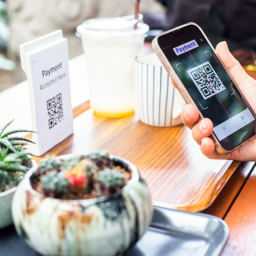The vibrant world of events and event planning is fast-paced, dynamic, and constantly evolving. Event planners and venue owners are always on the lookout for fresh and innovative ways to captivate audiences, create memorable experiences, and boost engagement. But in the clamor to stand out, many end up caught in the vortex of “more of the same.”
In this blog post, we’ll uncover game-changing strategies to revolutionize your approach to events. Whether you’re organizing a corporate gala, a music festival, or a community charity event, it’s time to break free from routine and supercharge your gatherings with electrifying ideas that can set you apart in a crowded space.
Personalization Is More Than Just a Trend
Gone are the days when one-size-fits-all models could wow a diverse crowd. Today’s audiences crave individualized attention and experiences that speak to them on a personal level. From customized event swag to tailored breakout sessions, the devil really is in the details.
In a TED-style city conference, for instance, group heterogeneous tastes might be steered towards niche discussions on AI’s societal impacts, while in a creative workshop, artists of varying levels could receive specialized coaching—beginners on fundamentals and professionals on the latest industry techniques.
Remember, personalization extends beyond content—it’s about adjusting the physical environment, from seating arrangements to networking opportunities. Create spaces where attendees can gather based on shared experiences or interests, facilitating connections that can deepen their engagement and add value to the overall event experience.
Interactive Tech: Bridging the Virtual and Physical Worlds
The integration of interactive technology can turn an event from passive to participatory. Consider incorporating augmented reality (AR) or virtual reality (VR) experiences to engage attendees in a unique and immersive way. Custom apps can empower users to customize their schedules, participate in live polling, or virtually tour the venue, all from their smartphones.
For a festival, digital scavenger hunts with in-app challenges can lead participants to discover hidden stages or artist meet-and-greets, while at a corporate seminar, an AR-enhanced keynote presentation can break down complex concepts into bite-sized interactive elements, enhancing learning and retention.
No longer a novelty, these tech features can be the backbone of an event’s success, allowing for real-time adjustments based on user data and providing a wealth of analytics post-event to guide future improvements.
Sustainability: Beyond a PR Buzzword
In today’s eco-conscious climate, sustainable practices have transitioned from a nice-to-have to a must-have element of event planning. Minimizing waste, reducing carbon footprints, and supporting local economies all contribute to an event’s appeal and longevity.
Opt for digital invitations and programs, cater with locally sourced organic food, and partner with charities or green initiatives to offset the environmental impact of your event. Building sustainability into the core of your planning process not only reflects positively on your brand but also aligns with the values of a growing audience segment that’s passionate about the planet.
Remember, sustainability extends to social and economic factors as well. Consider offering accessibility options for all attendees, supporting local, minority-owned businesses, and ensuring a diverse and thoughtful program that respects the cultural sensitivities of your audience.
Experiential Marketing: An Event Within an Event
Experiential marketing is a powerful strategy, and events are the perfect venue to showcase its potential. Imagine an art installation that interacts with attendees using IoT and biofeedback sensors, or a pop-up shop where guests can not only buy products but also engage with brand ambassadors and participate in product demonstrations or workshops.
The key is to design experiences that invoke the desired response from attendees, whether it’s an emotional connection with a brand, a deeper understanding of a product, or a memorable interaction with a concept. Such engagements not only extend the life of the event in the memories of attendees but also instill a sense of brand loyalty and advocacy.
For venue owners, consider creating spaces within your facility that can be easily transformed for such activations, allowing clients to offer these experiential add-ons to their event packages without the additional stress of logistics.
Flexibility Is King: Creating Adaptable Spaces
The ability to adapt venue spaces to various setups and moods is increasingly sought after by event planners. An open floor that can seamlessly transition from a networking area to a performance stage, or a smart room that can change lighting and acoustics at the touch of a button, offers the kind of flexibility that enables bespoke experiences.
Modular furniture and stage systems can facilitate quick changes, and strategic use of lighting and sound can create different atmospheres throughout the day. Incorporate design elements that are both versatile and aesthetic, and invest in high-quality, multi-purpose equipment that can be repurposed across different types of events.
Venue owners who can provide such adaptable spaces gear themselves up for a range of events and clients, ensuring a steady stream of bookings that maximize the utility of their location.
The Power of Storytelling: Weaving a Narrative
Every event has a story waiting to be told. It might be the story of a company’s growth and vision, the celebration of a culture’s heritage, or the advancement of a certain area of knowledge. Whatever the narrative, events that place storytelling at the forefront tend to resonate deeper with their participants.
Utilize thematic elements that run through the decor, presentations, and even the choice of entertainment to create a cohesive and immersive experience. Events with clear and compelling narratives often leave audiences with a sense of purpose, driving home the messages intended by the organizers.
Remember, an emotional connection to the story enhances the retention of event content, which could be pivotal if the event serves an educational or promotional purpose.
Data-Driven Insights: Planning With Precision
Finally, the use of data analytics can be the difference between an event that merely happens and one that makes a significant impact. Collecting and analyzing attendee feedback, demographic information, and engagement metrics can provide invaluable insights into what worked and what didn’t.
These insights can guide future event planning with laser-sharp precision, informing decisions on content, scheduling, and the overall experience. The goal is not just to measure success but to continually improve, iterating on the basis of real-time feedback and historical data.
For venue owners, offering integrated data collection and analysis as part of their service can be a game-changer, providing event planners with the tools they need to create more successful events.
In Conclusion
The future of event planning and hosting is rife with opportunities to innovate and thrill audiences. By embracing personalization, interactive tech, sustainability, experiential marketing, adaptable spaces, the art of storytelling, and data-driven insights, you can take your events from mundane to extraordinary.
Remember, the backbone of every supercharged event is a team dedicated to creativity, agility, and a commitment to delivering meaningful experiences. Whether you’re an event planner or a venue owner, the time to revolutionize is now. Supercharge your events, and watch as your audience—and industry reputation—takes flight. After all, we’re not just planning events anymore, we’re crafting memories and forging connections that last far beyond the final applause.



